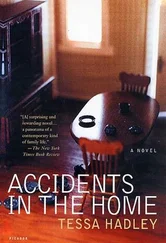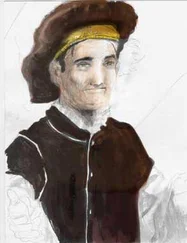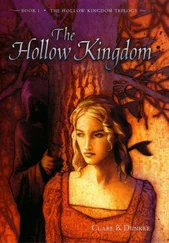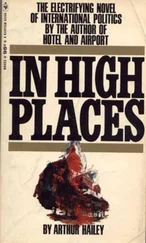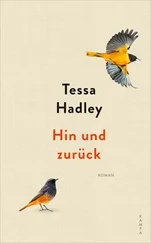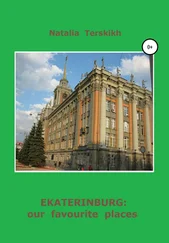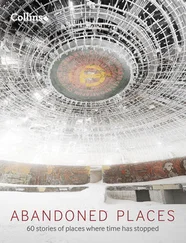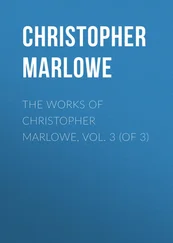I hoped, rather ridiculously, that I could somehow identify the tree on old maps. An early estate mapof the Pelhams has lovely water-coloured woods and springs of trees with shadows pooling to the east, but no individual trees. The Ordnance Survey followed the same convention, so that the sun is always setting in nineteenth-century mapscapes, but whereas the earlier maps showed trees merely to indicate the presence of woodland, the second half of the nineteenth century saw the arrival of OS maps so detailed that they showed every non-woodland tree in fields or hedgerows that was more than thirty feet from another tree. Oliver Rackham, the historian of the countryside, estimated that nationwide the surveyors plotted some twenty-three million individual trees, and many are still there to be found.

While single trees were marked on the published maps, single tree stumps might be plotted on the original boundary sketch mapsbecause they were meres marking the beginning and end of a hedge that the farmer had uprooted half a century before. I once spent an enjoyable hour searching for the vestiges of the ‘Hornbeam Stub’that marked a stretch of boundary between Furneux Pelham and Great Hormead. My search was in vain, as it was for the yew tree. Sadly, as I later learned, Master Lawrence’s axe had struck the yew some forty years before the first large-scale sheets of north-east Hertfordshire. Still the looking was almost as rewarding as the finding would have been.
The tree was just the start. I was soon fascinated by the tomb in the wall, the inscription above it, and other places associated with the hero: Shonks Garden , his wood, and his moat. At first, I kept coming across intriguing references to Piers Shonks when I was looking for something else: in old newspapers and county histories, guidebooks and letters. He was even in the old Post Office directories: at Brent Pelham in 1862 with its reported 1,601 acres and population of 286, I read that in the church ‘In the north wall of the nave there is a curious monument to the memory of one Piers O’Shonkes, the legendary slayer of dragons’.
Ever since the Elizabethan map-maker John Norden passed through Brent Pelham and found the place name and Shonks’ tomb the only things worth noting down, people had been trying to get to the bottom of the legends attached to that curious monument. In the words of the eighteenth-century antiquary and tombstone enthusiast Richard Gough – pretending to disapprove – the tomb had long ‘furnished matter for vulgar tradition, and puzzled former antiquaries’.
Folklorists collect things. Fully paid-up folklorists might collect legends associated with a place, such as those who compiled the Folklore Society’s classic county series. Others focus on a theme such as the folklore of plants, some collect fairy-lore, playground chants or dances.
For my part, I found myself simply collecting the legend of Piers Shonks; that is instead of just happening upon accounts of the legend, at some point I started hunting for them. In the preface to his Italian Folktales , Italo Calvinodescribes perfectly what this is like, the sometimes obsessional searching, his feeling that some ‘essential, mysterious element lying in the ocean depths must be salvaged to ensure the survival of the race’. At the same time, he knew that there was a risk of disappearing into the deep. ‘I was gradually possessed by a kind of mania, an insatiable hunger for more and more versions and variants. Collating, categorizing, comparing became a fever.’
As I spent ever more time in the company of Shonks, I liked to seize on anything that helped me to justify it, not least the notion that along the way I would learn a thing or two about something worth knowing about. In her 1914 The Handbook of Folk-Lore , Charlotte Sophia Burnesuggests that studying ‘folk-lore’ will advance the study of ethnology, history, economics, politics, sociology and psychology. There are certainly worse ways to get your bearings in an English village than to study its old stories, examine its tombs and dig up its potsherds. The father of antiquaries, Joseph Strutt, wrote that the study of such things ‘brings to light many important matters which (without the study) would yet be buried in oblivion, and explains and illustrates such dark passages as would otherwise be quite unknown’.
That sounds like a suitably gothic enough reason for us to go in search of Piers Shonks. And where better to start than at the house that Shonks built?
And as imagination bodies forth / The forms of things unknown, the poet’s pen / Turns them to shapes, and gives to airy nothing / A local habitation and a name.
— A Midsummer Night’s Dream , Act 5, Scene 1
On a summer’s afternoon in the early years of the twentieth century, a group of Edwardian gentlemenprocessed through a field of close scrub in Brent Pelham like men who had lost something important. The ground was unremarkable, broken and tumbled down to woodland, but was bound by wide and now stagnalditches dug with great effort some seven or eight centuries earlier to fashion a moat. The members of the East Hertfordshire Archaeological Society were searching for signs of a half-remembered house that had once stood there, but I hope that some among them were looking for something more, hoping to catch sight of a great rumour in its infancy, to detect, in a broken blade of grass perhaps, the long-ago path Piers Shonks took on the day legend says he bested a dragon.
See you the dimpled track that runs,
All hollow through the wheat?
O that was where they hauled the guns
That smote King Philip’s fleet.
Rudyard Kipling’s ‘Puck’s Song’didn’t appear in print until the following year, but the archaeological imagination it embodies was no doubt at work that summer’s day in 1905 as those men tried to find something hidden beneath tussock and root that would carry them back to the distant past.
A local newspaper report of the day’s excursion called it ‘a moated site of some two and a half acres across upon which once stood the castle of the celebrated Piers Shonks, the slayer of the Pelham Dragon’. The castle (if not the dragon and its slayer) was a fiction. Most moats that trench the countryside are not the stuff of medieval sieges, but are homestead moats built around new farms and manor houses in the thirteenth and fourteenth centuries by men ostentatiously proclaiming their independent status and their membership of the knightly class – or their aspirations to it. They were especially popular on the boulder clay of East Anglia. Oliver Rackham has written that anyone who has dug as much as a postholein the clay will be in awe of the labour that went into excavating an entire moat, so people must have had a good reason to do it. They may have served a practical purpose as fishponds, or as a ready water supply for putting out fires, or for drainage or sewerage, and they must have offered some degree of deterrence to passing robbers and rapists, the notorious trailbastons – vagabonds with big sticks – of the period , but many historians agree that moats were first and foremost a status symbol.
William Blyth Gerish, the man who had organised the trip that afternoon, was careful to call the vanished building a house and not a castle. To the Elizabethans, the moated site had been plain old Shonkes . It was by then an ‘ancient and decayed place’. Known as Shonkes Barn in the eighteenth century, it was said it would soon ‘lose its name in all likelyhood with its substance, which is in a very tottering condition’. The prediction proved partly true. Thomas Hollingworth’s beautiful Georgian estate map of Beeches Farm in green and yellow watercolours shows a neat four-sided moat identified in the key simply as Nursery & Moat, the building forgotten and seemingly the hero’s name as well, but all is not lost: the adjacent fields are labelled Shonks Farmyard and Shonks Hoppett . Some forty years later, a new survey showed that the moat had been extended and gained an extra enclosure; it was now The Hoppits & Shonks Garden . Shonks played on people’s minds and their superstitions in those parts: writing at Clifton School in Bristol in 1872, one pretentious schoolboy from near the Pelhams noted that by night Shonks Garden is ‘studiously avoided by the simple villagers’. Other locals were less easily spooked, treasuring the moated old pasture, not only for its association with their hero, but also for its early summer carpet of narcissus, the double white jonquil.
Читать дальше


